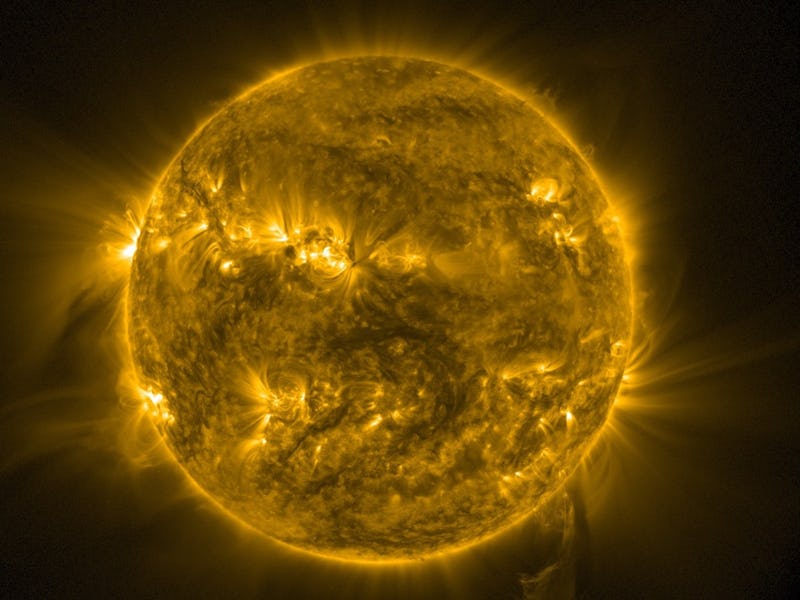Watch: New videos reveal Sun’s chaotic eruptions as it reaches solar maximum
Watch the Sun burst as its reawakens.

The Sun is waking up. The star is roaring its way toward solar maximum, a critical period defined by massive solar flares and dangerous potential. And in new videos and images released by the National Oceanic and Atmospheric Administration, we can witness the terrific power of the Sun’s eruptions in tremendous detail.
What’s new — On July 10, a new satellite that targets the Earth-Sun system captured a spectacular solar flare. The footage is the latest view of our closest star, which pulses stronger with every passing day since September 2020. The new video and images were collected by the GOES-18 satellite. NOAA, which operates the observatory, released the new views on Tuesday. They are GOES-18’s first images of the Sun.
The reason is that the Sun is nearing the moment of peak activity, a chaotic point in the star’s 11-years-long dormant-active cycle, a point called the solar maximum. The video shows a huge coronal mass ejection bursting out from the Sun’s lower right section:
GOES-18’s Solar Ultraviolet Imager (SUVI) captured a coronal mass ejection on July 10, 2022. It explodes from the bottom right section of the Sun.
Why it matters — To understand why it is important to study these ejections, know that if our star releases a coronal mass ejection in the direction of Earth, it can disrupt communications satellites and power infrastructure. Because of the technologies and necessities that rely on our power grid and satellites, the chaos could ultimately endanger lives.
Staring at the Sun
The GOES-18 satellite is the most recent Sun-gazing mission to reach space. Other established projects like NASA’s Parker Solar Probe and Solar Dynamics Observatory also keep a keen eye on the Sun’s volatility.
GOES-18 launched in March 2022 and debuted its first imagery of planet Earth in May. It is a two-pronged mission: While the satellite’s Solar Ultraviolet Imager tracks the Sun’s changes, its suite of terrestrially-gazing instruments watch Earth as clouds move across the atmosphere. It can also monitor how wildfires spread through heated terrain.
SUVI can capture glorious views of the Sun because it collects extreme-ultraviolet (EUV) and X-ray light, the wavelengths of choice when analyzing the Universe’s most potent displays, as shown in this set of images showing slightly different views of the Sun during the recent flare-up:
SUVI observes the Sun across six channels. The outer layer of the Sun, called the solar corona, can reach a million degrees and its scorching activity is best visible with X-ray and extreme-ultraviolet (EUV) cameras.
The researchers manning the Parker Solar Probe and Solar Dynamics Observatory focus on this area of the Sun: The corona. Borrowing the Latin word for “crown,” this region defies logic by featuring raging temperatures far hotter than the layer of atmosphere underneath it. For NOAA, which is more typically associated with studying weather systems on Earth, this area is important to study because it can directly affect our system.
Earth perpetually swims in a sea of charged particles emanating from the Sun. The pretty displays in SUVI’s imagery show what happens when the Sun discharges higher doses of this material into space. This radiation, called the solar wind, pulses throughout the Solar System and marks our cosmic neighborhood. We are relatively protected from the effects of solar wind and radiation because of our atmosphere — but other planets, like Mars, are not so well-shielded.
NOAA scientists will use SUVI to forecast events related to flares, monitor changes to the corona that could hint a coronal mass ejection may soon appear, and spot activity as soon as possible.
By understanding our Sun, we better grasp our home in the Universe.
This article was originally published on